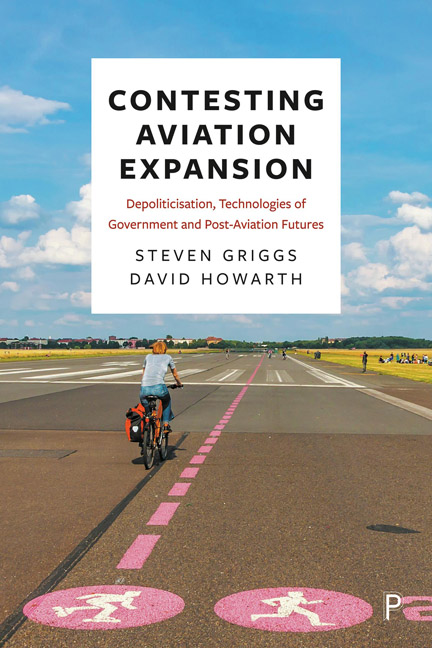 Contesting Aviation Expansion
Contesting Aviation Expansion Published online by Cambridge University Press: 18 January 2024
In the final years of the Second World War, the UK aviation industry was singled out in the corridors of power as a strategic driver of post-war recovery (Barnett, 1995; Engel, 2007; Edgerton, 2018: 189–90). This state sponsorship rapidly coalesced around a regime of aviation expansion which was predicated on a predominant social logic of ‘predict and provide’ (Adams, 1981; Dudley and Richardson, 1998). ‘Predict and provide’ was inscribed in the apparatus of the state and government, spelling out an administrative rationality that informed the energies of ministerial staff in planning and delivering additional airport capacity, where the latter was deemed necessary to meet the predicted exponential growth of passenger numbers. Hence, aviation policy was strategically pared down to the interdependent and ‘troublesome’ tasks of determining the timing of new airport infrastructure, deciding on or making a case for particular sites or locations and ushering proposed developments through planning processes and any local opposition. In other words, decisions over the need for, and the siting of, additional runways and terminals, came to rest on the predictive capabilities of the practices of forecasting and quantification of future passenger demand.
This chapter explores how the knowledge and expertise of forecasting brought into play complex political processes of data accumulation, calculation and modelling in the realm of aviation and airport expansion. We show how the DfT, in its various guises, constituted a wealth of categories, assumptions, economic models and statistical techniques, which sought to normalise expectations of expansion, putting in place complex assemblages of alternative projections of air travel across the UK and individual airports. Paradoxically, practices of forecasting provided a framework and a stage for core decision-making in the present, while effectively projecting the making and implementation of concrete decisions into a depoliticised space of the future. Along this pathway, the magical currency of numbers and the logics of quantification enabled the DfT to position itself as a ‘centre of power’, which could marginalise all but the most expert and powerful of citizens and groups.
However, despite assembling these statistical and modelling tools, we argue that in the field of airport and aviation expansion provision did not always follow prediction.
To save this book to your Kindle, first ensure [email protected] is added to your Approved Personal Document E-mail List under your Personal Document Settings on the Manage Your Content and Devices page of your Amazon account. Then enter the ‘name’ part of your Kindle email address below. Find out more about saving to your Kindle.
Note you can select to save to either the @free.kindle.com or @kindle.com variations. ‘@free.kindle.com’ emails are free but can only be saved to your device when it is connected to wi-fi. ‘@kindle.com’ emails can be delivered even when you are not connected to wi-fi, but note that service fees apply.
Find out more about the Kindle Personal Document Service.
To save content items to your account, please confirm that you agree to abide by our usage policies. If this is the first time you use this feature, you will be asked to authorise Cambridge Core to connect with your account. Find out more about saving content to Dropbox.
To save content items to your account, please confirm that you agree to abide by our usage policies. If this is the first time you use this feature, you will be asked to authorise Cambridge Core to connect with your account. Find out more about saving content to Google Drive.